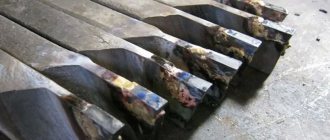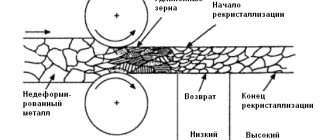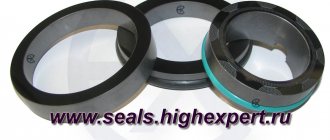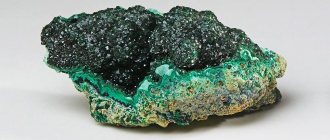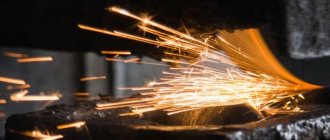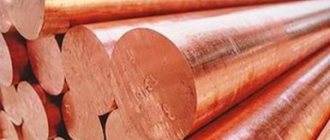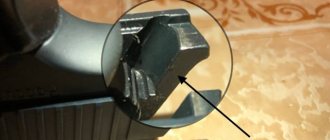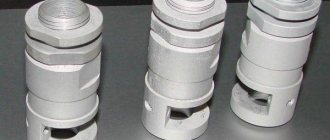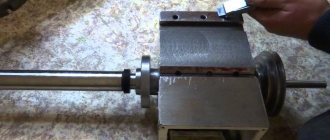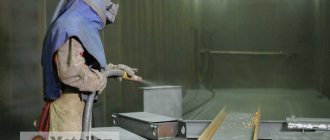Cryogenic processors –
equipment for increasing metal life
The processes of hardening semi-finished products, blanks and especially finished parts are one of the main reserves for increasing the efficiency of metal use. This problem is directly related to increasing the reliability, durability of machines and their operational characteristics and therefore must be solved in a comprehensive manner, starting with the choice of a rational design of products and ending with the use of technological methods that ensure high performance characteristics of the most loaded parts.
Technological methods for controlling the strength level of metals include:
- doping;
- heat treatment;
- chemical-thermal treatment;
- plastic deformation (hardening);
- thermomechanical treatment;
- cryogenic treatment.
The highest level of properties of structural steels can currently be obtained by thermomechanical processing methods based on the combination of plastic deformation and heat treatment. Plastic deformation occurs above the point of phase transformations of steel, and subsequent sharp cooling (hardening) fixes the intermediate structural state of the steel. Tempering subsequent to thermomechanical treatment fixes a more stable structural state, slightly reduces hardness and strength, increases viscosity and significantly reduces internal stresses.
Varying the methods and technological regimes of thermomechanical treatment, cryogenic treatment and subsequent tempering provides a different structural state and combination of mechanical properties of steel.
Cryogenic treatment is not a definitive operation. To reduce the stresses caused by quenching or thermomechanical treatment and to obtain the required mechanical properties, steel after cryogenic treatment must be tempered.
Cryogenic treatment of steel is the cooling of hardened steel to a temperature below the end of the martensitic transformation, i.e., to the temperature of liquid nitrogen, at a speed below the critical rate, holding for completion of phase transformations, and subsequent heating to normal temperature.
Cryogenic treatment is carried out once and does not need to be repeated, since the properties of the material acquired as a result of hardening and deep cold treatment are preserved throughout the entire service life of the product.
Although cryogenic treatment is a volumetric hardening method, its use is also effective on case-hardened steels, the core of which must have high strength with increased viscosity, and the surface must have good abrasion resistance.
In most cases, cryogenic treatment is applied to products with a high carbon content in steel, in the structure of which a large amount of retained austenite remains after quenching or thermomechanical treatment.
Domestic scientists such as A.P. Gulyaev, N.F. Vyaznikov, V.S. Polozhentsev, V.G. Vorobyov made a significant contribution to the development of cryogenic processing. and others.
The following main purposes of using cryogenic processing of steel can be distinguished:
- increasing hardness, wear resistance, strength due to the transition of retained austenite to martensite;
- improvement of dimensional stability and dimensional stability after processing;
- increasing impact strength and wear resistance due to the formation of fine carbides in alloy steels;
- increase in service life due to the removal of residual stresses.
The increase in hardness, strength and, as a consequence, increase in wear resistance due to the transition of retained austenite to martensite during cryogenic treatment has been well studied. The martensitic transformation temperature does not depend on the cooling rate and is determined by the carbon content in the steel. The more carbon there is in steel, the more the martensitic transformation point decreases. For steel of any composition, the transition from austenite to martensite occurs in a certain temperature range. At the point at which the martensitic transformation begins, the transition of austenite to martensite occurs at a very high speed and within a few thousandths of a second most of the austenite (approximately 70%) transforms into martensite, after which the process slows down. The remaining amount of untransformed austenite transforms into martensite as the temperature decreases, and the process stops at the end point of the martensitic transformation. The position of the end point of the martensitic transformation is determined by the carbon content in the steel. For steel with a carbon content of 0.6%, the end point of the martensitic transformation is below room temperature. The amount of retained austenite in simple carbon steel depends on the carbon content and the quenching temperature: the more carbon in the steel and the higher the heating temperature for quenching, the more retained austenite is retained in the structure of the hardened steel.
The amount of retained austenite increases especially sharply with increasing quenching temperature of hypereutectoid steel. The most widely used hypereutectoid steels in industry are structural ball bearing steel, high-speed steels, and tool die steels.
Improvement of dimensional stability and dimensional stability after processing is necessary for measuring and medical instruments, ball bearings. These steels have an increased amount of carbon (more than 1%) and, after quenching and low tempering, have high hardness.
In hardened high-carbon steel at room temperature, the aging process occurs over a long period of time, which consists of partial decomposition of martensite and the transformation of a certain amount of retained austenite into martensite. These processes cause a slight change in the volume and linear dimensions of products, which is unacceptable for measuring instruments of high accuracy classes. To prevent aging, measuring instruments are subjected to cryogenic treatment and tempering after hardening.
The increase in impact strength and wear resistance due to the formation of finely dispersed carbides in alloy steels is due to the emergence of new crystallization centers, which orderly build a single-layer crystal. During cryogenic treatment, new atoms are layered onto a single-layer crystal, and the crystal grows. The more isomorphic impurities in the steel, the more centers of crystallization, the finer the grain. The best isomorphic impurities are niobium, tungsten, molybdenum, chromium, titanium, and vanadium.
Increasing service life by removing internal residual stresses. Internal stresses arise during the process of rapid heating and cooling of the metal due to unequal expansion or compression of the surface and internal layers, with uneven deformation and structural transformations throughout the volume. Internal stresses greatly influence the properties and transformations occurring in metals. Structural changes that occur during cryogenic processing help relieve internal stresses in the metal. This mechanism works not only on steels, but also on alloys of non-ferrous metals based on titanium, aluminum, and copper.
For cryogenic processing, modern technological equipment is used (Fig. 1), which meets the demanding standards of the fifth technological order. The influence of the human factor on the processing result is minimized.
Practical results
To date, the following results are known from Russian practice:
— increase in wear resistance of brake discs by 71-105%
— increase in the service life of modular cutters made of R6M5 steel by 2 times (100%)
— increase in the wear resistance of industrial knives (made of steels Kh12MF, Kh6F1, 9ХС, KhVG, 50Kh14MF) by 50-100%
— increase in abrasive wear resistance of gray cast iron by 11-73% (in terms of mass wear)
— increase in the service life of rolls of section and ball rolling mills (made of Kh12VMF and 4Kh5MFS steels) by 38-115%
— increase in wear resistance of the rings of the bolster reinforcement (steel 95Х18) by 46%
— increase in the life of springs for clutch discs by 125%.
Equipment includes:
- cryogenic processor;
- temperature sensor;
- container with liquid nitrogen;
- solenoid valve;
- controller;
- Personal Computer.
The cryovessel provides automatic transfer of nitrogen gas under a given pressure into the cryochamber.
The cryochamber allows you to simultaneously process up to 900 kg of products. The design of the chamber ensures a “dry process” of processing, eliminating contact of the processed parts with liquid nitrogen, which eliminates the possibility of thermal shock.
The cryoprocessor provides control of the cryogenic processing process. The variable process parameters are: temperature, cooling and return to room temperature rates, holding time.
Depending on the grade of steel and the amount of retained austenite, the hardness of steel during cryogenic treatment increases by 2–8 HRC, and the proof strength of steel σ0.2 increases to 20%, the tensile strength σв increases to 15%.
When quenching high-speed steel, the temperature at the end of the martensitic transformation is significantly below 0°C, therefore, a significant amount of retained austenite (more than 18%) remains in the structure of the steel after quenching. With further cooling of the hardened high-speed steel to a temperature of minus 80 - 2000C, the suspended process of martensitic transformation is resumed, this is accompanied by an increase in hardness by 4 - 6 HRC. After cryogenic treatment, the amount of retained austenite (up to minus 1000C) in the structure of high-speed steel usually does not exceed 5 - 8%.
If cryogenic treatment is provided, then multiple tempering can be replaced with a single tempering.
When cold-processed steel is tempered, the hardness decreases slightly (1–2 HRC), but the tool becomes less brittle and obtains more stable dimensions.
Cryogenic treatment increases the productivity of high-speed steel tools by 10–20%, since the transition of retained austenite to martensite at low temperatures does not deplete the martensitic base structure of carbon, as happens during tempering.
Table 1 shows the mechanical properties of corrosion-resistant steel 95×18 before and after cryogenic treatment.
Table 1
| No. | Heat treatment mode | Conditional yield strength σ0.2, MPa | Tensile strength σв, MPa | Relative elongation δ, % | Relative narrowing ψ, % | Impact strength KSU, kJ/m2 | Hardness, HRC |
| 1 | Quenching 1000–1050°C in oil; cold treatment minus 70-80°C; holiday 150–160°C in air | 1980 | 2300 | — | — | 63 | 59 |
| 2 | Hardening in oil 1000–1050°C; tempering at 150-300°C; air cooling | 1900 | 2000 | 2 | 10 | 196 | 56 |
The table shows that during cryogenic treatment, the yield strength increases by 4%, the tensile strength by 15% and the hardness by 3 HRC units.
Table 2 shows the mechanical properties of pre-effectoid chromium structural steel 40X before and after cryogenic treatment.
Recommendations
- ASM Handbook, Volume 4A, Steel Heat Treatment Fundamentals and Processes
. ASM International. 2013. pp. 382–386. ISBN 978-1-62708-011-8. - Padmakumar, M.; Guruprasath, J.; Akhutan, Prabin; Dinakaran, D. (2018-08-01). "Study of the phase structure of cobalt and its effect on WC - Co carbides before and after deep cryogenic treatment." International Journal of Refractory Metals and Hard Materials
.
74
: 87–92. Doi:10.1016/j.ijrmhm.2018.03.010. ISSN 0263-4368. - Tamizhmaniy, S; Mohd, Naguib; Suleiman, H. (2011). "Characteristics of PVD inserts with and without deep cryogenic processing." Journal of Advances in Materials Science and Engineering
.
49
(2):460–466. - "Archival copy." Archived from the original on 2015-09-03. Retrieved 2015-07-30.CS1 maint: zipped copy as title (link)
- "Zephyr Tele".
- Zhao, Z; Hong, S. Y (October 1992). "Cooling Strategies for Cryogenic Processing from a Materials Perspective". Journal of Materials Science and Performance
.
1
(5):669–678. Bibcode:1992JMEP…. 1..669Z. Doi:10.1007/BF02649248. - Richter, Alan. “Cryogenic processing systems can extend tool life and reduce cycle times.” Production of cutting tools
. - Strano, Matteo; Chiappini, Elio; Tirelli, Stefano; Albertelli, Paolo; Monno, Michele (09/01/2013). "Comparison of Ti6Al4V machining forces and tool life for cryogenic and conventional cooling." Proceedings of the Institution of Mechanical Engineers, Part B: Journal of Mechanical Engineering
.
227
(9):1403–1408. Doi:10.1177/0954405413486635. ISSN 0954-4054. - Shokrani, A.; Dhokia, V.; Newman, S.T.; Imani-Asray, R. (01/01/2012). "Initial study of the effect of using liquid nitrogen coolant on the surface roughness of nickel-based alloy Inconel 718 in CNC milling." CIRP Procedures
.
45th CIRP Conference on Manufacturing Systems 2012. 3
: 121–125. doi:10.1016/j.procir.2012.07.022.
